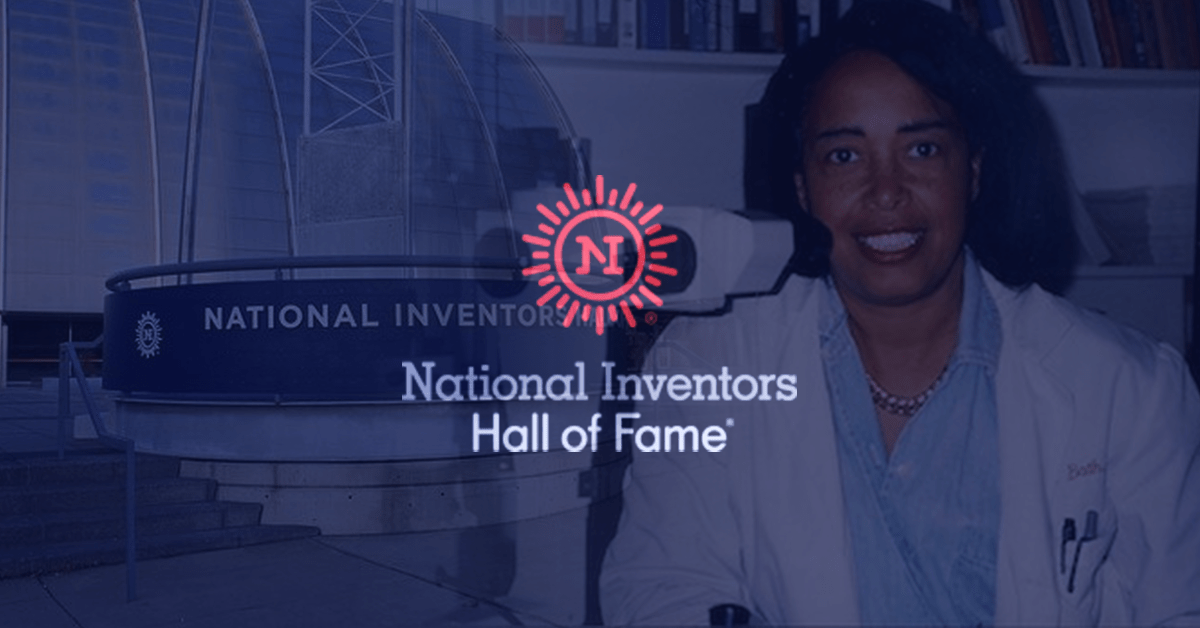Pioneering Ophthalmic Innovator Patricia Bath, MD, Nominated for National Inventors Hall of Fame

One might say the word trailblazer was invented to describe Patricia Era Bath, MD. In 1973 she was the first African-American to complete an ophthalmology residency at New York University. In 1975 she was the first African-American woman appointed to UCLA Medical Center’s surgical staff. And in 1983 she became the first woman to lead a post-graduate training program in ophthalmology.
But Dr. Bath, who died in May 2019, was also an innovator. In 1986, after nearly five years of research and testing, she invented a tool that was crucial to the trajectory of cataract surgery – the Laserphaco Probe. Granted a medical patent in 1988 [US Patent No. 4,744,360], the invention established Dr. Bath as the first African-American woman to receive a medical patent. She would go on to add four more patents to her credit.
Other Firsts to Her Credit
Dr. Bath has other firsts to her credit. She was the first to document that blindness disproportionately affected Blacks compared with other ethnic groups, leading her to co-found the American Institute for the Prevention of Blindness in 1978. This effort was a result of her experience as an intern at NYU working in Harlem Hospital, where she observed that an inordinate number of patients were blind or visually impaired compared with those she saw at Columbia University. After concluding that the high prevalence of blindness among Blacks was due to lack of access to ophthalmic care, she proposed a new discipline called community ophthalmology.
Dr. Bath is said to have experienced numerous instances of sexism and racism throughout her career, and she decided to take her research overseas to avoid being impeded by the “glass ceilings” in the US. According to her bio, her work was accepted at the Laser Medical Center in Berlin, the Rothschild Eye Institute in Paris, and the Loughborough Institute of Technology in the UK. She said she achieved her “personal best” in research and laser science while abroad.
Up until her death, Dr. Bath said her greatest passion was fighting blindness. She related a life-changing moment that occurred on a humanitarian mission to North Africa, when by implanting a keratoprosthesis she restored the sight of a woman who had been blind for 30 years. “The ability to restore sight is the ultimate reward,” Dr. Bath said.
Hall of Fame Nominee
Dr. Bath’s remarkable career led her to be nominated 11 times for the National Inventors Hall of Fame, an organization that recognizes the enduring legacies of exceptional US patent holders. If elected, she would be the only African-American woman out of 603 inventors to have a place in the NIHF.
“My mother’s invention is as significant to the laser cataract surgery industry as Bell’s telephone is to the telecommunications industry and Edison’s light bulb is to the electric lighting industry,” her daughter, Eraka Bath, MD – an associate professor of psychiatry and biobehavioral sciences at UCLA – said in a news release. “Being inducted into the National Inventors Hall of Fame would be an amazing honor.”
After her NYU residency, Dr. Bath began a cornea fellowship at Columbia University, where she focused on corneal transplantation and keratoprosthesis surgery. Both the UCLA Jules Stein Eye Institute and Charles R. Drew University of Medicine and Science in Los Angeles recruited her to co-found an ophthalmology residency program at the city’s Martin Luther King Jr. Hospital. She also became the first woman ophthalmologist on the faculty at Jules Stein.
Office in the Basement
She was offered an office “in the basement next to the lab animals.” She refused the spot. “I didn’t say it was racist or sexist,” Dr. Bath said. “I said it was inappropriate and succeeded in getting acceptable office space. I decided I was just going to do my work.”
She was subsequently appointed assistant chief of the King-Drew-UCLA ophthalmology residency program in 1974. She became chief in 1983, becoming the first woman to head an ophthalmology residency program in the US.
In 1978, Dr. Bath founded the Ophthalmic Assistant Training Program, a group whose graduates work to provide screening, health education, and support for blindness-prevention strategies. Later that same year, she co-founded the American Institute for the Prevention of Blindness and served as its president.
While at Jules Stein, she established the keratoprosthesis program, which continues today, to provide advanced surgical treatment for blind patients.
Dr. Bath retired from UCLA in 1993, and was subsequently elected the first woman on its honorary staff. She also served as a professor of ophthalmology at Howard University College of Medicine in Washington, DC, and as a professor of telemedicine and ophthalmology at St. George’s University School of Medicine in Grenada. She lectured internationally and authored over 100 papers.
